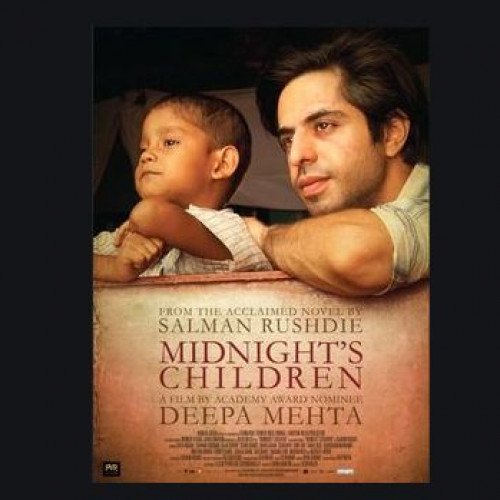"TINTIN, TINTIN IN TIBET, HERGÉ" vs "SALEEM SINAI, MIDNIGHT’S CHILDREN, SALMAN RUSHDIE"

TINTIN, TINTIN IN TIBET, HERGÉ
Tintin in Tibet (French: Tintin au Tibet) is the twentieth volume of The Adventures of Tintin, the comics series by Belgian cartoonist Hergé. It was serialised weekly from September 1958 to November 1959 in Tintin magazine and published as a book in 1960. Hergé considered it his favourite Tintin adventure and an emotional effort, as he created it while suffering from traumatic nightmares and a personal conflict while deciding to leave his wife of three decades for a younger woman. The story tells of the young reporter Tintin in search of his friend Chang Chong-Chen, who the authorities claim has died in a plane crash in the Himalayas. Convinced that Chang has survived and accompanied only by Snowy, Captain Haddock and the Sherpa guide Tharkey, Tintin crosses the Himalayas to the plateau of Tibet, along the way encountering the mysterious Yeti. Following The Red Sea Sharks (1958) and its large number of characters, Tintin in Tibet differs from other stories in the series in that it features only a few familiar characters and is also Hergé's only adventure not to pit Tintin against an antagonist. Themes in Hergé's story include extrasensory perception, the mysticism of Tibetan Buddhism, and friendship. Translated into 32 languages, Tintin in Tibet was widely acclaimed by critics and is generally considered to be Hergé's finest work; it has also been praised by the Dalai Lama, who awarded it the Light of Truth Award. The story was a commercial success and was published in book form by Casterman shortly after its conclusion; the series itself became a defining part of the Franco-Belgian comics tradition. Tintin in Tibet was adapted for the 1991 Ellipse/Nelvana animated series The Adventures of Tintin, the 1992-3 BBC Radio 5 dramatisation of the Adventures, the 1996 video game of the same name, and the 2005-6 Young Vic musical Hergé's Adventures of Tintin; it was also prominently featured in the 2003 documentary Tintin and I and has been the subject of a museum exhibition.
Statistics for this Xoptio

SALEEM SINAI, MIDNIGHT’S CHILDREN, SALMAN RUSHDIE
Saleem Sinai is the protagonist and narrator of Midnight’s Children. He is born, along with one other child, at the exact moment of India’s independence. His identity, however, is switched at birth. As a result, he is raised by a prosperous family in Bombay, while his counterpart and future rival, Shiva, is raised in poverty. Saleem has the powers of telepathy and a preternaturally acute sense of smell, which allow him to find the other children of midnight and create the Midnight’s Children’s Conference. As he approaches his thirty-first birthday, he says he is nearing death. His body is literally falling apart, and it’s only a matter of time before he crumbles into dust. Driven by a desire to beat his biological clock, Saleem narrates his life story to his devoted and loving caretaker, Padma. His tale, which begins with his grandfather Aadam and is at times unreliable and contrived, represents not only his individual life story but also the entire history of postcolonial India. All the major events in his life correspond to important political events in Indian history, leading him to compare his narrative to religious texts. Given his fantastic birth and extraordinary powers, the prime minister of India, Indira Ghandi, seeks to destroy him along with the other midnight’s children.